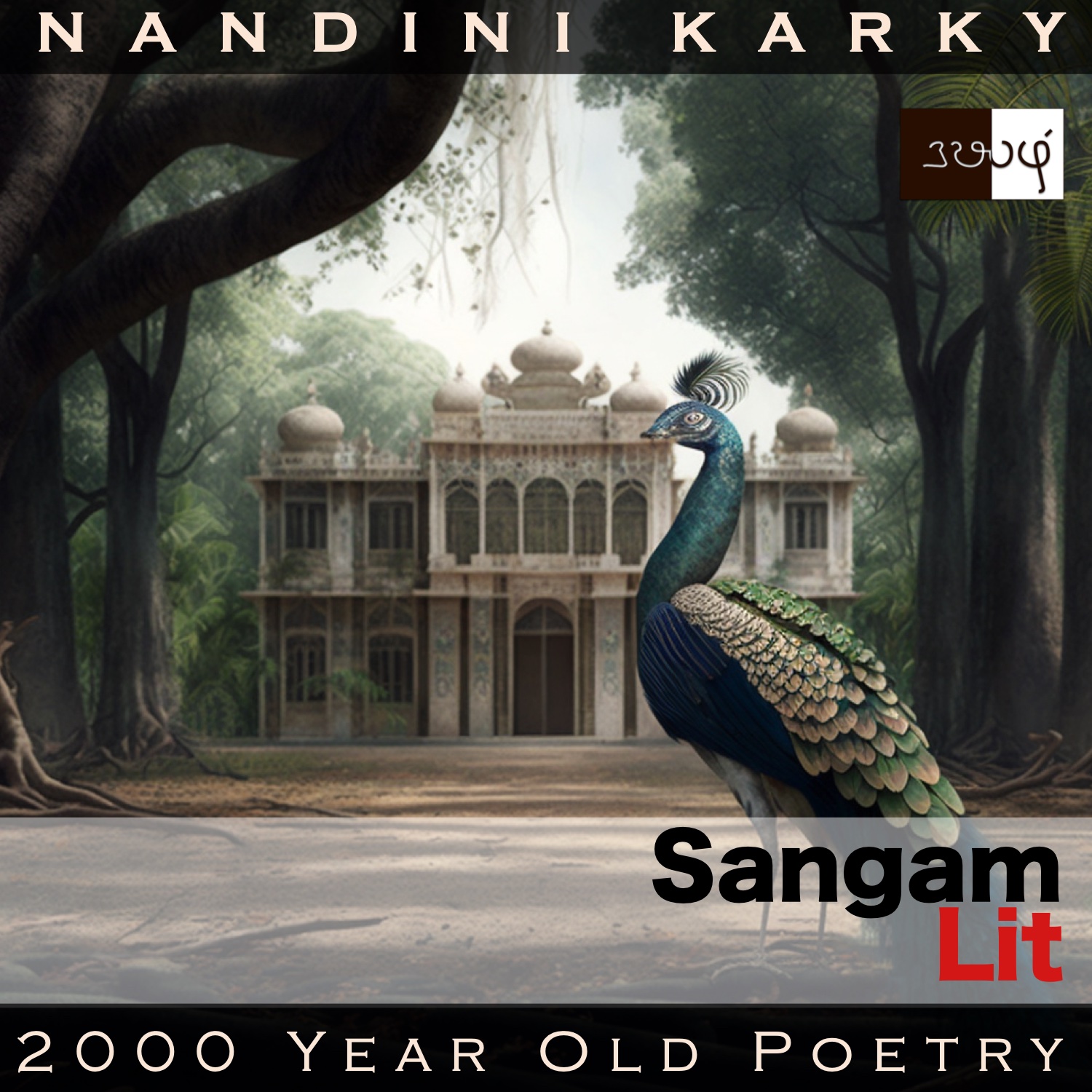Podcast: Play in new window | Download
Subscribe: Apple Podcasts | Spotify | Amazon Music | Android | iHeartRadio | TuneIn | RSS | More
In this episode, we perceive a striking simile and a unique technique of praise, as depicted in Sangam Literary work, Puranaanooru 127, penned about the Velir King Aay Andiran by the poet Uraiyoor Enicheri Mudamosiyaar. The verse is situated in the category of ‘Paadaan Thinai’ or ‘King’s praise’ and brings out the not-so-obvious greatness of King Aay.

‘களங்கனி அன்ன கருங் கோட்டுச் சீறியாழ்ப்
பாடு இன் பனுவல் பாணர் உய்த்தென,
களிறு இலவாகிய புல் அரை நெடு வெளில்,
கான மஞ்ஞை கணனொடு சேப்ப,
ஈகை அரிய இழை அணி மகளிரொடு
சாயின்று’ என்ப, ஆஅய் கோயில்;
சுவைக்கு இனிது ஆகிய குய்யுடை அடிசில்
பிறர்க்கு ஈவு இன்றித் தம் வயிறு அருத்தி,
உரைசால் ஓங்கு புகழ் ஒரீஇய
முரைசு கெழு செல்வர் நகர் போலாதே.
A new king and a new poet make their appearance in our Puranaanooru journey. The poet’s words can be translated as follows:
“They say, ‘As bards well-trained in music, bearing black-stemmed small lutes, akin to Indian black-currant fruits, took them away as gifts, in the barren spaces with tall posts, bereft of elephants, a muster of wild peacocks reside. With women wearing only those jewels that cannot be given away, it’s a total ruin!’, talking about King Aaay’s house. There are wealthy kings, who fill their stomachs with plenty of spiced rice, pleasing to the taste buds, without the thought of giving charity to others. The great mansions of these rulers, who have no great fame to be sung about, pale in comparison to the abode of Aay!”
Let’s delve deeper into the verse. The poet starts by talking about a fruit that is called ‘Karonda’ in English, and ‘Kilakkai’ in contemporary Tamil. He refers to this fruit only to stand in parallel as a simile to a dark-stemmed small lute. Please do take a moment to look up a lute. The Met Museum of Art has a beautiful page dedicated to this instrument from ancient times. Now, turn your attention to the image of a cut ‘karonda’ fruit and you will come away stunned by how similar these two things look. We are guided by the words of this verse to see and relish this connection but who guided those ancient poets? Was it their powers of observation? Some training they undertook? Or the distraction-free times they lived in? Whatever be the answer, yet again, the Sangam poets charm us with their ability to see the oneness in disparate elements.
Returning to the verse, the poet talks about how those lutes are held in the hands of musically adept bards, and thanks to their skill, they have been gifted with elephants by the King Aay. Now that the elephants are gone, the tall posts to which they were tied lies barren and a flock of peacocks roam about hither and thither. Not only this, the women in that palace seem to have a bare minimum of ornaments, only those that are forbidden to be given away, the poet details. He talks about how looking at all this, people tend to declare King Aay to be ruined. Now, the poet turns away from the state of this king and contrasts it with others, who have well-filled tummies and huge mansions, but they never have a thought about rendering unto others. He concludes with the words no matter how huge the mansion of these kings, they cannot be deemed equal to the barren spaces of King Aay’s palace. A clear message from this ancient verse seems to be that true greatness lies not in how much one has but how much one can give!




Share your thoughts...